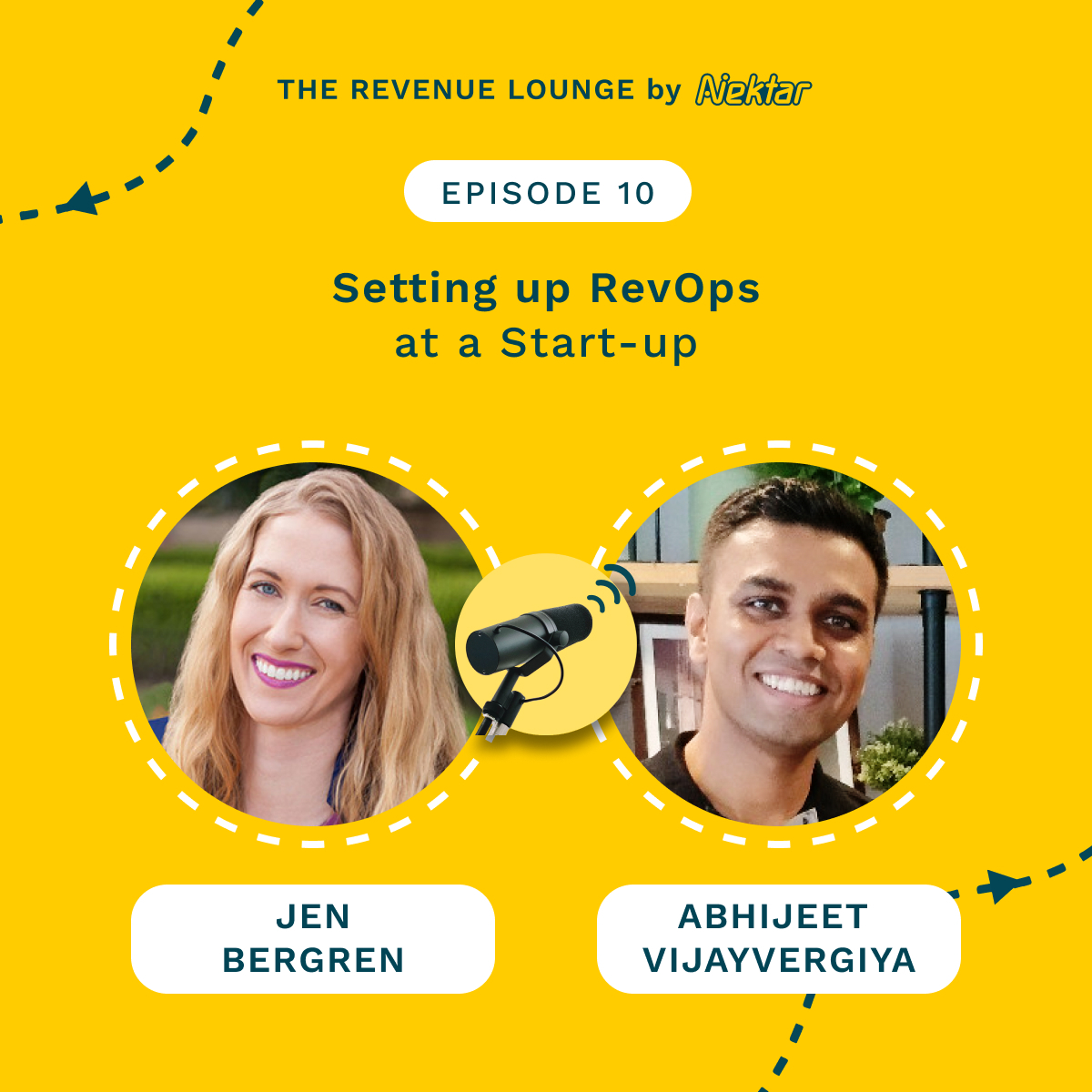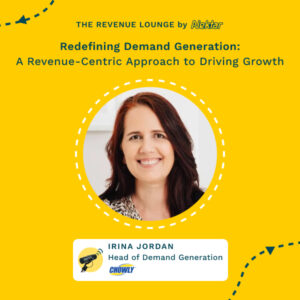The Revenue Lounge: Season 3
January 31, 2023

About
The Revenue Lounge
The podcast covers stories from leaders across RevOps, Sales, Customer Success, GTM, Data and Marketing about what drives these functions and what advice they would share with our listeners. With 3 seasons recorded, the podcast currently features 50+ enterprise leaders in the B2B SaaS domain. Tune in to hear from the best in the business
Buyer Contact data continues to be one of the most complex challenges for revenue operations teams to solve. According to Gartner, an average of 7 people are involved in most buying decisions in a typical sales cycle. And quite a few of these stakeholders might be outside the department your sellers are targeting.
GTM Teams lose out on several opportunities in the absence of accurate data of the buying committee which in turn also creates visibility gaps around the relationship and engagement. Let’s try and understand how revenue leaders can deal with this challenge.
Our guest today is Shantanu Shekhar, the Senior Director, Sales Strategy & Operations at Gong. Shantanu has scaled, optimized, and transformed businesses across several geographies, including Europe, the Middle East, Africa, and Asia-Pacific. He is currently driving sales operations and go-to-market strategy for Gong in EMEA.
Let’s hear it from Shantanu! Want to learn more about Nektar?
Talk to our team – https://bit.ly/3iGuFEH

[00:00:00] Buyer contact data continues to be one of the most complex challenges for revenue operations teams to solve. According to Gartner, an average of seven people are involved in most of the buying committee decisions in a typical sales cycle, and quite a few of these stakeholders might be outside the department your sales reps are targeting.
[00:00:16] Go to market teams, lose out on several opportunities in the absence of accurate data about these buying. Which in turn also creates a lot of issues especially around visibility, with respect to relationship with the buying committee, engagement with them, and so on and so forth. So let’s try and understand how revenue leaders can deal with this challenge.
[00:00:34] Our guest today, Shantanu Shekhar, the Senior Director sales Strategy and Operations at Gong. Shantanu has scaled and optimized businesses across several geographies, including Europe, the Middle East, Africa, and Asia. He’s currently driving sales operations and go to market strategy for Gong in EMEA. Hi Shantanu, welcome to the Revenue Lounge podcast and thanks so much for spending time with.
[00:00:57] Hi Abhijeet. My pleasure. Great to be associated with anything that’s advancing the cause of RevOps and you guys are doing a great job of it, so thank you for having me. Thank you.
We are just doing our bit and getting inspired by folks like you. So let’s get started. It would be great to get a quick background about yourself, your role and your background, what you’ve been doing.
Absolutely. So I’ve now been in the revenue operations world for over a decade. In fact, I would say even before an official revenue operations role. I used to be a management consultant at Bain and Company where essentially most of the projects I was working on were growth strategies, full potential strategies, more focused on revenue.
[00:01:36] I was lucky that I got a chance to work on a few B2B sales projects there, and I realized there was a lot of opportunity for optimization and growth within the B2B tech world, and that’s what got me into tech. Funny story, I’m, I’m based in Ireland, as you probably have seen. I, I had thought of moving to the US in the Bay Area where I’d spent about six months as a consultant.
[00:01:58] Loved the world there. This is back when Uber was a startup and I’d worked with a few private equity companies who were investing in these smaller companies. Long story short, Europe seemed to be an easier landing spot, and that’s what got me to LinkedIn, one of the biggest SaaS companies at that point as well, but still relatively start up like, and I got a chance to work on sales strategy and operations.
[00:02:18] Relatively the word or the role that Rev. Split into back then, right? We had pretty much sales ops in its own world. Customer success ops didn’t really exist. Marketing operations are separate teams still. There are things which are obviously merging them together and things which are different and systems was almost a different world.
[00:02:38] Quite often not part of the same world as well. So very interesting, uh, experience there. Spent about five years learning the ropes there. As you mentioned, focusing on Europe, middle East, Africa. After that I spent about a year in a smaller company called Nitro, uh, which is also a SaaS player, direct competitor to Adobe and DocuSign.
[00:02:58] And there had the opportunity to work [00:03:00] a little bit broader in the revenue operations world outside of sales ops. And it was a great experience to just understand how to think about all these different pieces coming together. And long story short, there I was a customer of. And I don’t think I would’ve left in year, but I, I realized that Gong was one of those companies where really the mission of the company has been to help both companies and people their full potential.
[00:03:24] And a lot of that is driving the revenue intelligence and revenue operations category itself. So that was what got me interested. I’ve now been at Gong for about 10 months and really loving the experience. Wonderful. So tell us a little bit about your role here, what your day to day looks like, what you’ve been doing here for the last 10.
[00:03:41] Perfect. And, and the way I might do that, I might think about how I define Rev and club that into this Abhijeet if you’re comfortable with that. So the reason for. A lot of different companies define revenue operations differently and what we do as you, as you mentioned the beginning, I, I manage more of the Europe, middle East, Africa, which is our only [00:04:00] international office outside the US at the moment.
[00:04:02] And the way I think about revenue operations, there are really three core pillars and a base and a plinth, if you will. So for me, the three core pillars are more to do with go to market. The actual core operations, both across process and systems. And the third being data insights, actionable insights, which you can use for making decisions.
[00:04:22] And then at the base of the plinth for me, is more to do with people. The foundation of everything that we do is the people in the team that we work with, especially within the revenue operations world. We talked about different operations. How do you combine all of that and get the most of it and ensure that you’re driving value for the teams and people who are working in rev hops.
[00:04:42] But then at the plan for me is also just working with all the stakeholders because whatever problem you’re solving, whatever challenges you’re working on, finding the answers, maybe 20% of the job, 80% of it is actually working with all the stakeholders and getting them to move and driving change. So that to me is the piece.
[00:04:56] So in that world, the way I, I work [00:05:00] in, and it’s probably different to say, What is different from day one to day two? Because quite often there are things which are same and things which are different. But I would say try to flip between these five pieces for Gong in the Europe, middle East Africa business, given we are still a relatively newer organization.
[00:05:17] Internationally outside the US there’s a lot more interesting pieces on the first pillar, which I’ve, which is more on go to market strategy, figuring out what you wanna do five years from now. But then there’s also, there could be a data, I’m trying to figure out what to do for the new A, who’s joining tomorrow, how many accounts should they have, and which markets should they be looking at, I mean, segment they should be in, and making sure that we have actually the right account data as well as the contact data to help them succeed.
[00:05:41] Yeah, so that’s definitely very interest. And, and a very strategic role as well, right? I mean, because you’re running a market, which is first outside the core market, which is the us, right? So there’s a lot of interesting stuff to be done, a lot of experimentation. So seems more like you’re running a startup within a startup of your own.
[00:05:59] That’s so fair. That’s so fair. And, and the challenge of course, and the beauty is a lot of us who’ve probably worked in different companies, we bring our own learnings. How to ensure that you’re, you’re taking the right learnings and benchmarks, but also thinking about what’s unique in each company. So a lot of great learnings.
[00:06:11] I’m sure you’re going through the same journey right now as well. We are indeed, we are. So let’s move on to our next question. So I’ve noticed that you’ve been in the RevOps space for quite some time, and as you also shared your story. And you would’ve definitely witnessed the shift that we are seeing in selling world, especially what happened in the last two and a half years.
[00:06:29] We have constantly read reports about buyers being more reluctant to speak to sellers by doing their own independent research, even before coming on to the first call with the salesperson. And that the window of opportunity to contact buyers or get their attention is, is shrinking increasingly. So what’s your take on this transformation that we are seeing in B2B sale sales and how do you think it has changed or becoming more challenging?
[00:06:51] By the way. Very good point of view, because I would say the change that we’ve seen in the last, I would even say the last two, three years has been massive. Right? It’s just there was a change, obviously in the last decade of my own and I’ve, I’ve seen that in the last two 10 years I’ve been in this world more or less.
[00:07:08] But it’s really accelerated in the last three years with Covid, and then now even more so with. Unpredictable economy that we are in. So the way I think about this is maybe if I think about three core pieces, which is who we sell to, how we sell to them, and eventually how do they make a decisions? What are three things, which I’ve seen a lot of shifts and changes.
[00:07:28] And if I start on the first one, who we sell to. There was this very interesting article from Forester, which talked about, now we don’t really sell to a decision maker, but we sell to a buyer’s group. And they had a couple of very interesting stats about how the number of interactions, which buyers do today before making a decision to buy.
[00:07:47] And I’m talking about interactions both with different vendors, looking at a few other things, has gone up from an average of 17 in the B2B space to about 27, and that’s about a 58% increase. [00:08:00] 2019 to 2021 in two years, and that’s like changed a lot of how we think about multi-threading at a customer. And how do you ensure that you’re talking to the right number of contact?
[00:08:10] Again, we’ve probably seen a lot of stats coming in, including from my own company, around how many customers, how many contacts you have a customer to succeed and how that affects your win rate. So that’s been a big shift to me, and especially within that. It’s not just the decision makers, it’s influencers.
[00:08:25] You have to think about who’s your champion at. The customer literally becomes a project and you’re managing their entire process. That’s a big shift. Second, how we sell to them, I think. I would think of it in two parts as well. Within that, which is the omnichannel piece, which became massive in the b2, B2C world is has now transferred to B2B.
[00:08:43] So there’s so many more buyers who are just comfortable with what you might call self-checkout or self-serve, and a lot of people look for that, even for big transactions. I remember doing some work on this in a previous company where we were thinking about self-checkout and how do you think about credit card versus the standard auto form process and changes there and how it affects.
[00:09:04] Bad debt and so on. So all of that has shifted where people are more comfortable just maybe talking to a salesperson, but then buying on the website, right? They prefer doing that. And even right now, we have that, especially for existing customers if they want to just add a couple of seats. Most SaaS, of course, is based on subscriptions per seat.
[00:09:24] they just go in and do it online. They don’t even talk to a salesperson. So that happens quite a lot and that shift has been interesting. The second piece on that, how we sell, I would say is more about, and this is very, very, I’m sure. Driven by Covid more than anything else in remote work. This is the number of face to face interactions versus remote interactions now to sell are there In McKinsey study, we think, which talked about less than a third of all B2B sales, including enterprise, including SMB, mid-market, is now face to face less than a third and probably declining even more.
[00:09:55] So that’s been a big change and I know a lot of companies used to think about inside sales [00:10:00] being. Small to medium businesses and enterprise sales literally being a high touch process. It still is a high touch in terms of interactions going back to the first point, but it’s now more shifted to high touch over VCs, emails, calls, and so on.
[00:10:12] So that’s been an interesting shift. The third thing I would say has changed is literally how a customer decides to purchase a solution versus not. Because, and I think you mentioned in the beginning, there’s so much access to information. Look at portals or platforms like G2, what vendor A is doing versus vendor B, what are some of the biggest challenges?
[00:10:34] There’s so much information, it’s lot less solution selling in the traditional way. When a salesperson talks to a customer, it’s because the customer already has a very informed view before they even talk to a seller. So that’s been three big changes and I think the challenge from a, from a B2B sales team’s perspective is making sure.
[00:10:54] Really how think about discovery. How do you think about the entire sales process has become very, very crucial to [00:11:00] adapt to this. Yeah. Yeah. No super 11 points. I think I agree with all of them and been experiencing it as a seller myself, and know a lot of founders and other VP of sales and a, we share the same perspective, especially when I was a dream force.
[00:11:15] I think that this was like number one topic that was getting discussed. Just like a side cushion there with respect to what revenue operations teams can do to support through this transformation, right? I mean, we are going through these massive changes, right? So how does Rev play a role in this modern B2B digital selling that we are seeing?
[00:11:34] So I think the way I would think about it, and this is in a way at the core of what we do as well in that second bucket of the operations pillar that I mentioned. A lot of companies often run the risk of thinking very internally focused versus externally focused. And the way to solve for this, literally think about the customer life cycle, right?
[00:11:54] If literally think about the customer life cycle from the beginning to end. And if you’re a revenue operations professional, [00:12:00] your ideal. Understanding right from before anyone from your company has a touch point or the customer to the end point, I believe when the customer’s not, not churning, but expanding and, and getting really high value from you to think about the entire value chain and the obviously literally mapping out what are the different touch points, what is the process and what are the systems that we’re using across this, a very hot buzzword right now.
[00:12:25] Tech stack consolidation. How do you do that? Literally building and mapping that out across the buyer journey, across the entire customer life cycle. What’s changing, what’s not? Where do we need visibility? Where do we not, what is a must have versus good? Literally mapping all of that out and then being able to, having build the process, identify the systems, and then being able to measure that with very clear KPIs.
[00:12:47] I mentioned. The third pillar for me is insights. Quite often we think about. Stacks of data or literally an overload and overburden of information being [00:13:00] inside. That’s just pure data. How do you think about the signals and the messages which drive action? And again, across the buyer’s journey, what are three things that you care about?
[00:13:07] So I think if a, a rev professional is able to map that out for a. And this it’s tough process. It’s not easy to do that. It’s different for each company, for each even segment. To be fair. And having that mapped out very cleanly in the new world that we just talked about, I think is crucial. Yeah, yeah.
[00:13:23] No, that’s very actionable advice trans, thanks for sharing that. So I wanted to move back to the point around data that we’re discussing earlier, especially clean and complete contact data. It’s a big nightmare for a lot of DevOps teams to get this contact data going cuz there’s so much of dynamism there and a typical.
[00:13:40] Person lasts in a job for like 18 to 24 months. That’s like a pretty short time. So data decays, a lot of changes continue to happen. So how do Revs team stay up to date there with respect to handling this clean and complete data use case spot on? And by this is probably the holy grail of RevOps. It is.
[00:13:58] I remember someone had once [00:14:00] told me that there’s only bad data or possible data. There’s no such thing as good data. So that’s like, so such a challenge from a, a revenue operations perspective. So I think the, the two things I think which I’ve seen, which have been handy on this. As you’re thinking about your account data and the gaps that you have, literally think about, number one, what are the entry points, right?
[00:14:20] What are some of the things that you are adding in removing, how do you, how do you think about almost your data hygiene? And from a contact data perspective, what are the different sources that you’re bringing in? Because. Again, a lot of companies, including ones that have been forced to look at five different sources of contact information, 10 different sources of company information, which you then add in as you think about different markets, it becomes even more complex.
[00:14:42] So how do you literally build that process, and I don’t wanna use the word gatekeeper, but where are those real criteria on adding an account data or contact data? What is the minimum threshold that it must meet to be added in? But of course you will have. [00:15:00] Multiple sources coming in because there’s no single source of truth, which is the most accurate.
[00:15:03] So trying to figure that out. And then again, I’ll go back to the same lifecycle piece, trying to think about what is the process you’re using, what are the systems you’re using to try and build that in a clean, clean and accurate manner. Yeah, yeah. And what about the invisible hand? And let me elaborate on that point, right?
[00:15:19] There is an ever expanding buying committee that we are seeing, I think in Gong Labs has published some of the reports. Multi-threading and buying committee and buying groups compared to like an individual buyer. So there are at least like five to 10 people involved. And a lot of these contacts are not in CRM.
[00:15:34] Some of them are like invisible contacts, sellers not even aware. And these invisible contacts are calling shorts in the background. So one is seller doesn’t have visibility into them, and second is seller might be engaging with them, but the management or DevOps teams don’t have visibility into them.
[00:15:48] Right. So what’s your advice on getting a grip on this buying c. Uh, how, how do teams keep these things tight? Absolutely. I think the best answer I think is, is a magic one. But in the [00:16:00] absence of that, I would say this is where the importance of the discovery process, and I know we talk about this most sales methodologies and everything that we.
[00:16:08] Set up really pander to this, but the discovery process is so important, being able to help in the initial conversations, everyone from whether and, and depending on the company, if you have an SDR or a sales development team, which reaches out first to an account executive in the first conversation, making sure that.
[00:16:25] You’re able to really discover and understand the buying process as much as you can in the initial piece of the customer is really crucial to get it right. And second, again, like I said, the magic one for me is getting, whether it’s trying to get your CRM as close to possible data, if you much so at least you have a full view of who are the contacts, and then you try and map that to, based on your product, who you think the influencers should be and could be.
[00:16:49] And literally starting with that mindset. So it’s mapping and trying to have as much. The background ready before you go in and have the discovery process. Yeah. Yeah, and I think automation is a big role to play as well [00:17:00] here because there’s so much of data, workload that exists across the buying cycle and the sales process.
[00:17:05] We can’t continue to rely upon like a human intervention, whether it’s the DevOps team or it’s the users here of the CRM. I think a lot of automation is possible now, that was not possible like a few years. Uh, so it’s, it’s probably a topic for another day, but yeah. Uh, very passionate about how, uh, automation can help, uh, rev teams here.
[00:17:26] Absolutely, I think big, but yeah, big, big fan. I think, again, automation. If I take a two second thing, I think completely agree with you because if I think about everything from a. Making sure you’re keeping on top of not just stale data, but knowing where a past customer might have gone from a user perspective and other companies out there, which, which are doing this really well.
[00:17:44] Again, an as industry. I’m really excited to see about what you guys get into there as well. But literally seeing and being able to build on top of what you have from automation is gonna be key. Yeah, definitely. So moving on to the data duplication problem, right? I think it’s also a, a big plague [00:18:00] across the CRM systems in.
[00:18:01] Right. So while there’s a problem of data, missing data from a capture standpoint, the second problem is duplicate data, right? I mean, which even makes things messier, right? So what is your recommendation on and best practice with respect to cleaning that up and how automats like yours stay on top of it?
[00:18:20] Yeah, I think, I think this, again, I’ll go back to the, the process and systems, uh, piece that I always think about. So from a systems perspective, again, it’s, it’s being able to. Measure and evaluate what the right system is for you and making sure you set that up so you’re not only, you’re not only adding data, but you have an enrichment process set up so that your information is accurate.
[00:18:41] Everything from an account data perspective to contact data perspective, I think buying Nectar might help, if I might add that plug there. From a process perspective, to me there’s definitely a lot of, lot of ownership that you can distribute even for the team. So what I mean that is, let’s say I’m an A and.
[00:18:59] And [00:19:00] again, I’m assigned to a book or a named account book. How do you ensure that the A has a certain amount of responsibility to the quality of information associated to that account without making it a burden? It to be successful in their role, we have to ensure minimal workload. A but the more they can manage and clean when they know someone has moved, that’s gonna be helpful.
[00:19:21] So just having some part of process there. And then if for, for big enterprise companies, they obviously have the, the benefit of having heads to throw the problem, but for smaller companies making a very clean system and process. Blueprint there. Definitely. That’s a very actionable blueprint out there that you just laid off a very interesting conversation to Han, thanks for sharing all of these inputs with us.
[00:19:41] I wanna move to the next section here, a little away from Revs. More about you getting to know you better. So let’s talk about books. What’s one book that you have recently read that you really enjoyed? So I think it should probably be here in, in My Stock Here. So it’s uh, legacy, which is actually modeled on.
[00:19:58] The [00:20:00] learnings from the rugby world to literally what you can take leadership. And I think there are 15 great lessons there, and two which really resonated with me being in revs. Number one was more the part around sweeping the sheds, which is nothing is small enough for for you not to do. So I think just literally being able to do the sweat, the small stuff to make the big things really succeed.
[00:20:19] And second, To me, what’s really interesting was passing the ball. It’s part of, in fact, what you’re doing really well here at JI with with the podcast and getting people to talk about it, is how do you ensure that if you’ve got something, leaders really create leaders? How do you ensure you’re passing the ball around?
[00:20:34] So those are two things that I really love, but create book a lot of good lessons, which we can take into life and leadership as well. Yeah, and definitely I’m just added them to my reading list. Uh, definitely gonna check them out. Let’s talk about your favorite part of working in revenue. What is that? So to me, I think, and it goes back to the two pillars I talked about.
[00:20:53] So the beauty of Rev for me is you could be answering a question which is at the highest strategic level, [00:21:00] like you mentioned, a 30,000 feet view of the world, thinking about your strategy for the company longer term. But you could also be doing something the very same day, which is a three feet deep, very tactical, what I call keep the lights on problem to be solved.
[00:21:15] So just that ability. Work on both, I think keeps the job very interesting to me that the value that we add through that is very exciting. So I love those two. I would say the interplay between those two types of projects within Rev. Yeah. Yeah. And we are very passionate about this at Nectar because largely feel that Rev as a team, as a persona, as individuals, they need seat at the strategy table.
[00:21:39] Ands who realize it sooner than later and give that seat at the strategy table, grow much faster, predict. Compared to organizations who go through patchy periods, right? Because there’s so much value that can be delivered through these business insights that you talked about, tying data system, process and people, it, it’s a very unique function with a very, uh, specific [00:22:00] vantage point that can add incredible value and make that inflection point count.
[00:22:05] When companies hit product market fit. Totally agree with you. Yeah. So let’s talk about least favorite part about working in Ops . So it’s funny, it’s probably gonna be connected. I think the, and I would say more from least favorite. I really enjoy the role, which is I’ve been here, I think this is in this role for such a long time and I don’t see myself leaving.
[00:22:22] I think the biggest challenge, which probably we have is prioritization. Just given the number of things that are probably. There on the list on the two rule list, how do you prioritize, I think is the number one key, key challenge. What’s your formula of prioritization? How do you stay on top of your priority list?
[00:22:39] So I use a very simple, I’m a consultant by, by training. So it is a very simple two by two, which is, I would, I would literally think about everything being, is the impact low, medium, high, and is the urgency low, medium, high? And then just being able, and then if you look at. The second bucket I would also add within that urgency piece is even ability to, to execute.[00:23:00]
[00:23:00] And then figuring that out. I literally try and think about what are the big rocks we need to shift? What are the quick wins we must do now and we can get a lot from. So that’s something I used to prioritize, but even, um, I would say, Very simple thing is very, very focused. Work planning is is key. Yeah.
[00:23:16] Yeah. Nice. Yeah, I know. I think I have a grid of my own. We’ll talk about it some other time, but yeah, that’s very useful grid that you just shared. So who’s your favorite Rev leader that you look up to and why? So I would say when I was starting out in Rev, drove Na, he leads revenue operations at Rubrik.
[00:23:34] He was, he was my mentor at LinkedIn and he was, he was in the US business. I was in Dublin here and I learned so much from him. He can have a lot of conversations about account and contact data quality as well with you, but he’s like one of the, one of the best that I think both, uh, the pieces that I mentioned, 30,000 feet, we went the three feet.
[00:23:50] So yeah, I learned a lot from when I’m very grateful. Yeah. Amazing. We should get him on our podcast as well. I’m gonna reach out to him, . So last question, what’s one [00:24:00] piece of advice you’d like to leave for our audience? So I would say the one advice that I found very interest, or I, I feel was very, very useful in early on in my career in Rev as well, is try and find.
[00:24:12] The big rocks that you can move, literally try and solve challenges. To be successful in Rev, you have to run towards fire and not away from fire. And the more fires you can put out, the better you’ll be in. And literally the try and find the biggest rocks you can solve for and make the challenge think.
[00:24:30] Think big and solve the problem. That’s, that’s the key. I would say. Yeah, think big and solve the problem. Great way to end the podcast. Shantanu, thanks for your time today. It was lovely chatting with you. Very practical, actionable advice and good luck to you in your role and, uh, I’m sure we are going to speak again soon, but until then, uh, thank you.
[00:24:48] Thanks for your time. Have a good day. It was my pleasure and wish you all the best connect. I’m very excited to see where you could go from here. Thank you.

Ep #1: Navigating the Downturn with a Hyperfocus on Productivity
Listen Now
Ep #2: How to Win in Times of Uncertainty
Listen Now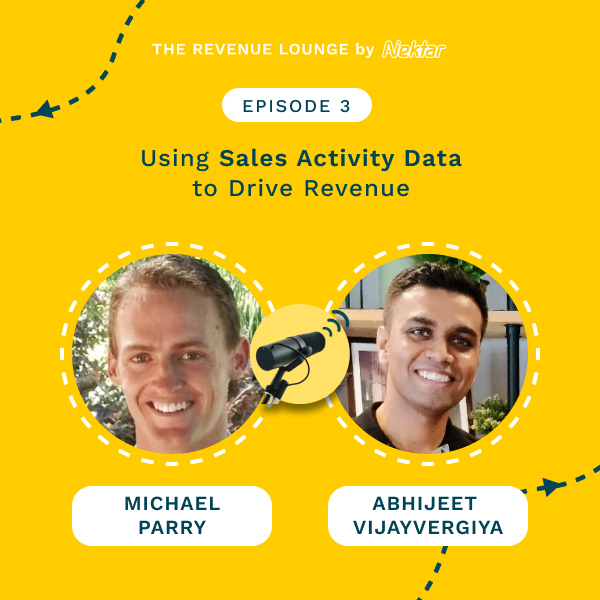
Ep #3: Using Activity Data to Drive Sales Productivity
Listen Now
Ep #4: Creating a Successful RevOps Roadmap
Listen Now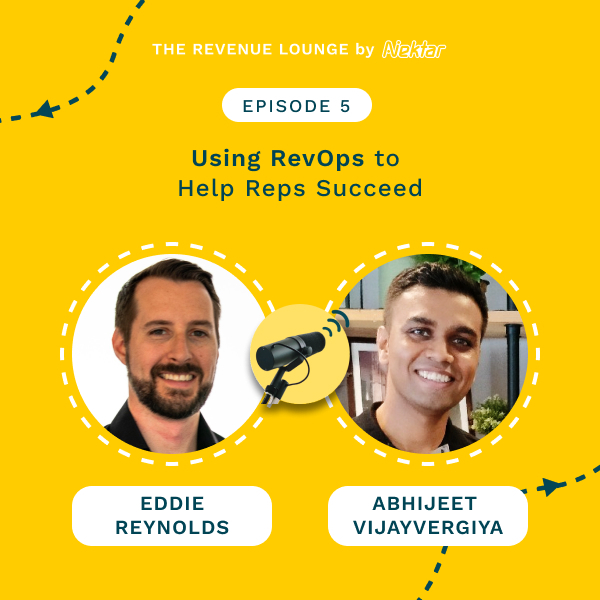
Ep #5: Using RevOps to Help Reps Succeed
Listen Now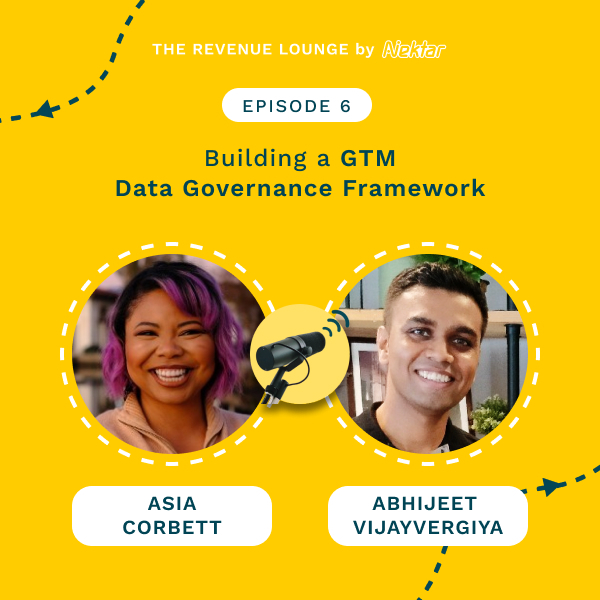
Ep #6: Building a GTM Data Governance Framework
Listen Now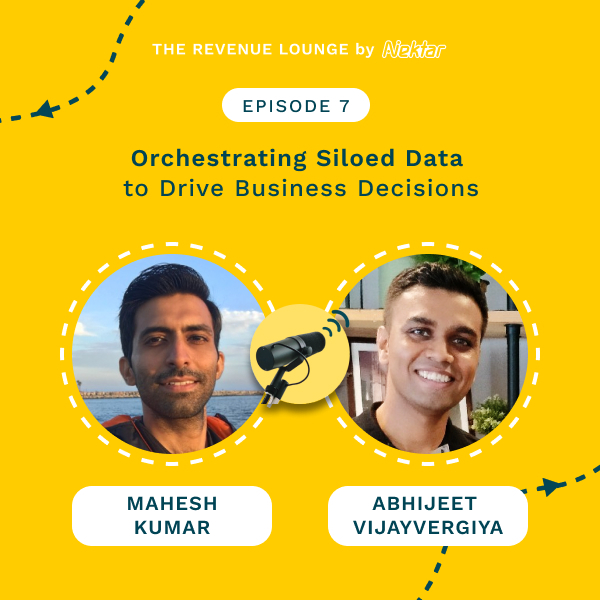
Ep #7: Orchestrating Siloed Data to Drive Business Decisions
Listen Now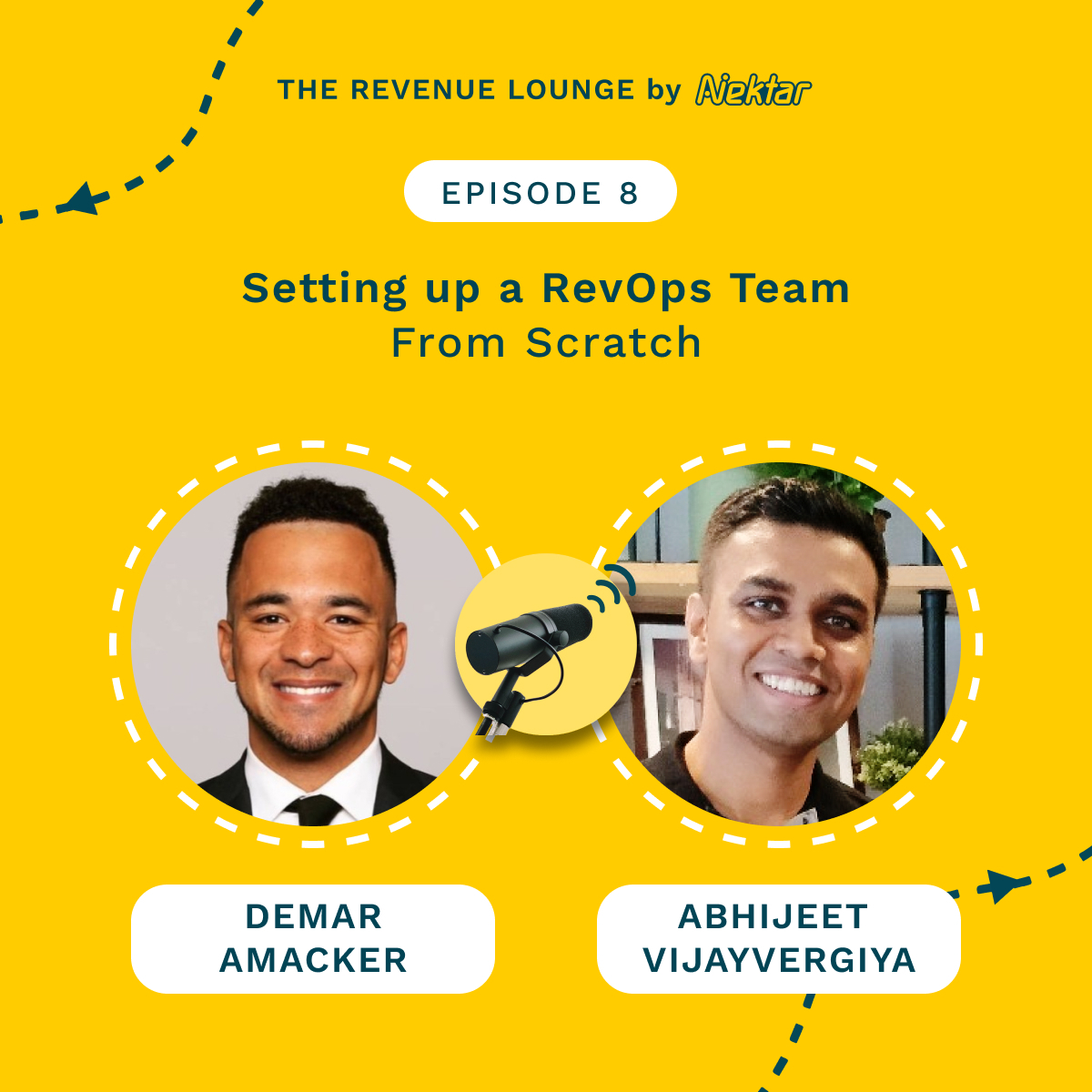
Ep #8: Setting Up a RevOps Team From Scratch
Listen Now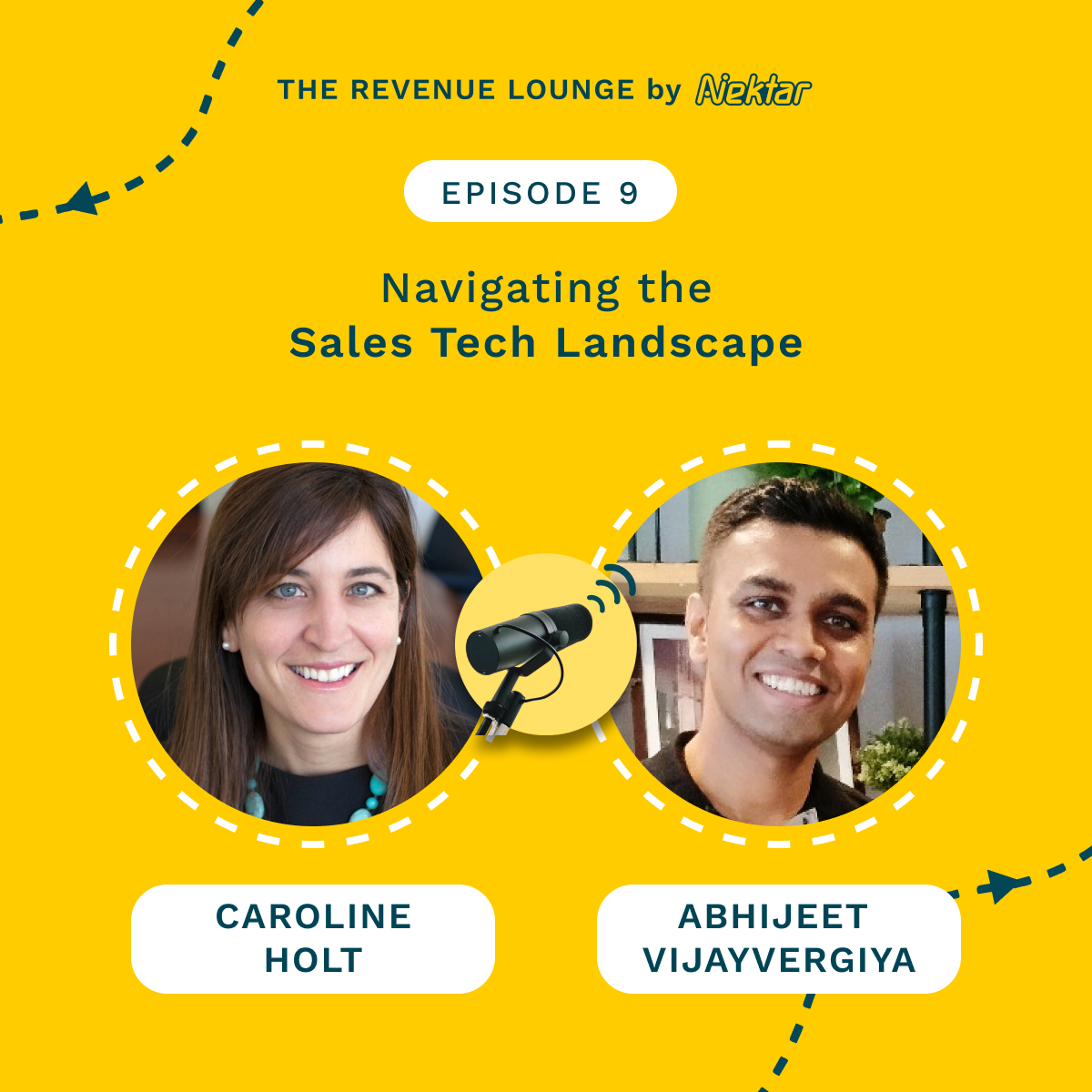
Ep #9: Navigating the Sales Tech Landscape
Listen Now